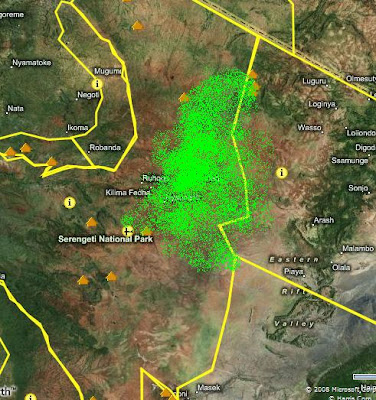 Storm approaching over the Serengeti.
Storm approaching over the Serengeti.There has been a lot of rain over the Serengeti over the past week. The main migrating herds are located on Ndutu grass plains, but are spread across the entire south eastern Serengeti.
The Great Wildebeest Migration moves through the Serengeti and Masai Mara National Parks. We track their progress. The migration path varies from year to year depending on weather and other environmental factors. The blog is the simpliest way to get an understanding of the movements based on recent past movement patterns.

 The migration is in the central Serengeti and heading south. There has been a some heavy rainfall in the central Serengeti.
The migration is in the central Serengeti and heading south. There has been a some heavy rainfall in the central Serengeti. The migration has started to move out of the Masai Mara and into the northern Serengeti and Loliondo to the east of the Serengeti.
The migration has started to move out of the Masai Mara and into the northern Serengeti and Loliondo to the east of the Serengeti.








 The migration is spread from north of Maswa Game Reserve through the Grumeti River and into the Grumeti Reserve. There has been good rainfall over the past week in the western Serengeti.
The migration is spread from north of Maswa Game Reserve through the Grumeti River and into the Grumeti Reserve. There has been good rainfall over the past week in the western Serengeti.





